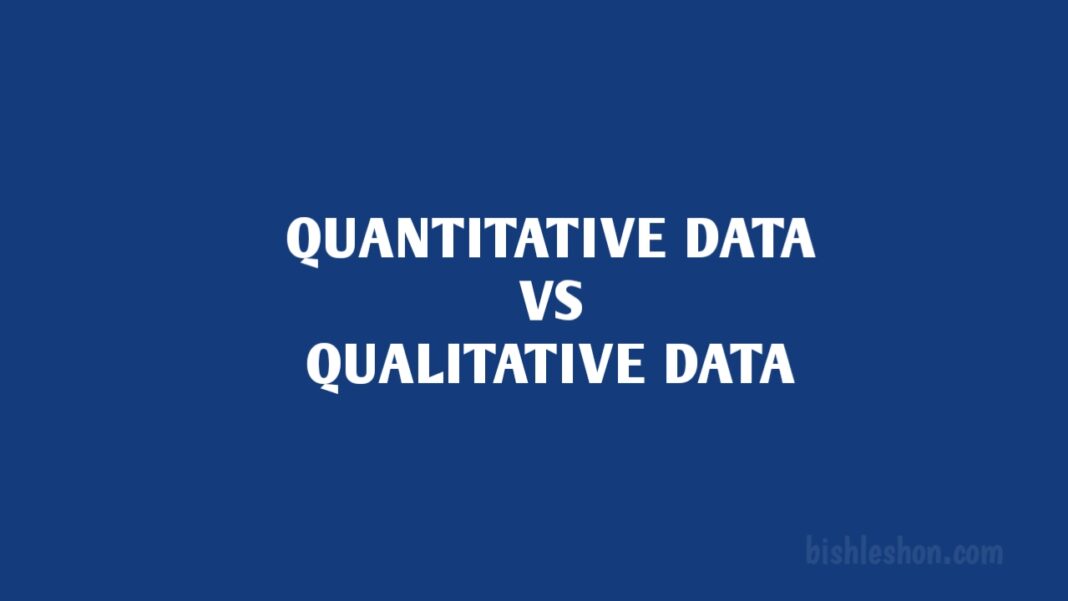Data is essential in decision-making processes, be it in business, healthcare, or research. However, not all data is created equal. Some are numerical and measurable, while others are subjective and non-numerical. Quantitative and qualitative data are two types of data that are commonly used in various fields. Understanding the differences between the two is crucial to ensure that the right data is used for the right purpose.
Table of contents
- Definition and Characteristics of Quantitative Data
- Definition and Characteristics of Qualitative Data
- Comparison between Quantitative and Qualitative Data
- 10 Key Differences between Quantitative and Qualitative Data
- Importance of Quantitative and Qualitative Data
- Choosing the Right Data Type for Your Research or Project
- Bibliography
Definition and Characteristics of Quantitative Data
Quantitative data is numerical data that can be measured and analyzed using statistical methods. It is objective and based on facts that can be verified or validated. Quantitative data is often collected through experiments, surveys, or other research methods that involve the use of numerical measurements. It is usually presented in the form of graphs, charts, or tables.
Examples and Applications of Quantitative Data:
Some examples of quantitative data include the number of sales in a business, the height and weight of an individual, and the results of a clinical trial. Quantitative data is widely used in various fields such as finance, economics, and healthcare. In finance, quantitative data is used to analyze market trends and forecast future performance. In healthcare, quantitative data is used to evaluate the effectiveness of treatments and interventions.
Definition and Characteristics of Qualitative Data
Qualitative data is non-numerical data that is descriptive and subjective. It is based on observations, opinions, and perceptions that cannot be easily quantified or measured. Qualitative data is often collected through interviews, focus groups, or other research methods that involve the collection of narrative data. It is usually presented in the form of text or audio recordings.
Examples and Applications of Qualitative Data:
Some examples of qualitative data include the experiences of patients with a particular medical condition, the opinions of customers about a product, and the cultural practices of a community. Qualitative data is widely used in various fields such as social sciences, anthropology, and market research. In social sciences, qualitative data is used to understand human behavior and social interactions. In market research, qualitative data is used to gather insights into customer preferences and behaviors.
Comparison between Quantitative and Qualitative Data
Quantitative and qualitative data differ in various aspects. Quantitative data is objective, numerical, and measurable, while qualitative data is subjective, non-numerical, and descriptive. Quantitative data can be analyzed using statistical methods, while qualitative data requires a more interpretive approach. Quantitative data is often used to answer research questions that involve measuring or comparing variables, while qualitative data is used to understand complex phenomena or experiences.
10 Key Differences between Quantitative and Qualitative Data
| Quantitative Data | Qualitative Data |
|---|---|
| Quantitative data is numerical. | While qualitative data is descriptive and non-numerical. |
| Quantitative data is analyzed using statistical methods. | Qualitative data is analyzed using a more interpretive approach. |
| Quantitative data is objective and based on facts. | Qualitative data is subjective and based on opinions and perceptions. |
| Quantitative data is often more precise than qualitative data. | Qualitative data is often less precise than qualitative data. |
| Quantitative data can be easily measured. | Qualitative data cannot be easily measured. |
| Quantitative data is usually presented in the form of graphs, charts, or tables. | Qualitative data is usually presented in the form of text or audio recordings. |
| Quantitative data is used to answer research questions that involve measuring or comparing variables. | Qualitative data is used to understand complex phenomena or experiences. |
| Quantitative data requires a larger sample size to ensure statistical significance. | Qualitative data can often be gathered from a smaller sample size. |
| Collecting and analyzing quantitative data can be more time-consuming and expensive than collecting and analyzing qualitative data. | Collecting and analyzing qualitative data can be less time-consuming and expensive than collecting and analyzing quantitative data. |
| Quantitative data is used in various fields such as finance, economics, and healthcare. | Qualitative data is used in various fields such as social sciences, anthropology, and market research. |
Importance of Quantitative and Qualitative Data
Both quantitative and qualitative data are important in various fields of research and practice. Quantitative data is essential for making data-driven decisions and evaluating the effectiveness of interventions or programs. Qualitative data is essential for understanding the experiences and perspectives of individuals and groups. Using both types of data can provide a more comprehensive and nuanced understanding of a research question or problem.
Choosing the Right Data Type for Your Research or Project
Choosing the right type of data depends on the research question or problem that you are trying to solve. If your research question involves measuring or comparing variables, then quantitative data may be more appropriate. If your research question involves understanding complex phenomena or experiences, then qualitative data may be more appropriate. In some cases, using both types of data can provide a more complete understanding of the research question or problem.
It is also important to consider the strengths and limitations of each type of data. Quantitative data is often more precise and can provide more objective results. However, it may not capture the nuances or complexities of human experiences. Qualitative data, on the other hand, can provide rich and detailed information about human experiences and perspectives. However, it may be more subjective and difficult to analyze.
In conclusion, understanding the differences between quantitative and qualitative data is important for making informed decisions in various fields. Both types of data have their strengths and limitations, and choosing the right type of data depends on the research question or problem. Using both types of data can provide a more comprehensive and nuanced understanding of the research question or problem.
Bibliography
- Creswell, J. W. (2014). Research design: qualitative, quantitative, and mixed methods approaches. Sage publications.
- Miles, M. B., & Huberman, A. M. (1994). Qualitative data analysis: An expanded sourcebook. Sage.
- Portney, L. G., & Watkins, M. P. (2015). Foundations of clinical research: applications to practice. FA Davis.
- Creswell, J. W., & Creswell, J. D. (2017). Research design: qualitative, quantitative, and mixed methods approaches. Sage publications.
- Patton, M. Q. (2014). Qualitative research & evaluation methods: integrating theory and practice. Sage publications.
Maybe the following text have helped you to reach the page:
- Understanding the Differences between Quantitative and Qualitative Data
- A Comparison of Quantitative and Qualitative Data: Strengths and Limitations
- Quantitative vs. Qualitative Data:
- Making Sense of Data: The Pros and Cons of Quantitative and Qualitative Methods
- The Importance of Choosing the Right Data Type: Quantitative vs. Qualitative
- Analyzing Data: A Guide to Choosing between Quantitative and Qualitative Methods
- Quantitative and Qualitative Data: How to Choose the Right Approach for Your Study
- Exploring the Differences between Quantitative and Qualitative Data in Research
- From Numbers to Words: A Comparison of Quantitative and Qualitative Data Collection
- Quantitative vs. Qualitative: Which Data Type is More Effective in Decision-Making?



 For all latest articles, follow on Google News
For all latest articles, follow on Google News